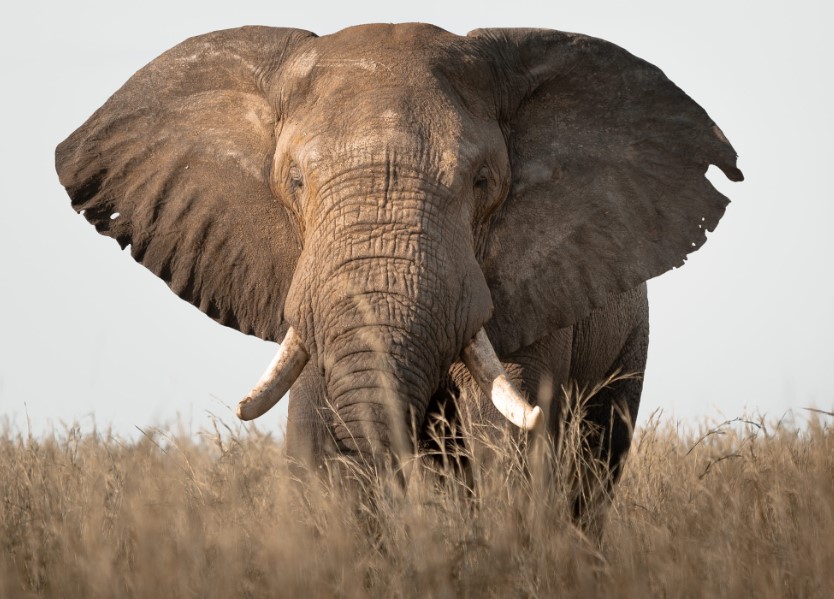Uganda’s Extraordinary Wildlife: A Haven for Biodiversity-Uganda boasts a remarkable and diverse range of wildlife. Known as the “Pearl of Africa,” this biodiverse nation offers a unique blend of ecosystems, including dense forests, expansive savannahs, lush wetlands, and majestic mountain ranges.
With its varied landscapes and favorable climate, Uganda supports an extraordinary array of flora and fauna. From the iconic mountain gorillas of Bwindi Impenetrable National Park to the vibrant birdlife of the Murchison Falls National Park, Uganda stands as a testament to the importance of wildlife conservation and eco-tourism.
Bwindi Impenetrable National Park
Nestled in southwestern Uganda, Bwindi Impenetrable National Park is a UNESCO World Heritage Site and home to nearly half of the world’s population of endangered mountain gorillas. Trekking through the dense rainforest to observe these magnificent creatures in their natural habitat is an unforgettable experience that draws visitors from across the globe.
Apart from gorillas, Bwindi is also home to a rich variety of other primates, such as chimpanzees, golden monkeys, and various species of monkeys. The park’s remarkable biodiversity extends to its flora, with over 1,000 plant species, including rare orchids and towering mahogany trees. Bwindi’s unique blend of wildlife and captivating scenery makes it one of Uganda’s most treasured natural wonders.
Murchison Falls National Park
Located in northern Uganda, Murchison Falls National Park is the country’s largest protected area. The park is named after the magnificent Murchison Falls, where the mighty Nile River squeezes through a narrow gorge, creating a breathtaking spectacle. The park’s landscape comprises vast savannahs, woodlands, and wetlands, offering a diverse habitat for wildlife. Elephants, buffalos, giraffes, and antelopes roam freely, while Nile crocodiles and hippopotamuses inhabit the riverbanks.
Murchison Falls National Park is renowned for its birdlife, with over 450 species recorded, including the rare shoebill stork and the iconic African fish eagle. Boat safaris along the Nile provide a unique opportunity to spot a wide variety of wildlife and appreciate the stunning natural scenery.
Queen Elizabeth National Park
Queen Elizabeth National Park, located in western Uganda, is a remarkable haven for wildlife enthusiasts. The park is famous for its diverse ecosystems, encompassing savannahs, forests, wetlands, and crater lakes. It is home to an impressive number of mammal species, including the famous tree-climbing lions of Ishasha, elephants, buffalos, and Uganda kob.
Visitors can embark on exciting game drives, guided nature walks, or thrilling boat safaris along the Kazinga Channel to witness the park’s abundant wildlife. Queen Elizabeth National Park is also a paradise for bird lovers, with more than 600 species recorded, ranging from the majestic African fish eagle to the vibrant and elusive shoebill stork.

Uganda’s wildlife is a testament to the country’s commitment to conservation and eco-tourism. The diverse range of ecosystems and protected areas in Uganda provide a safe haven for numerous species of flora and fauna. From the endangered mountain gorillas of Bwindi Impenetrable National Park to the roaring lions of Queen Elizabeth National Park, Uganda offers a once-in-a-lifetime opportunity to witness some of the world’s most incredible wildlife in their natural habitat.
Through sustainable tourism practices and community involvement, Uganda continues to preserve and protect its wildlife, ensuring a sustainable future for both the environment and local communities. Efforts such as anti-poaching campaigns, habitat restoration, and community-based conservation initiatives have contributed to the success of wildlife conservation in the country.
The government of Uganda, in collaboration with various conservation organizations, has implemented strict regulations and guidelines to safeguard the natural habitats and wildlife populations. Protected areas, national parks, and wildlife reserves have been established throughout the country, providing safe havens for numerous species.
Additionally, eco-tourism has played a significant role in promoting conservation in Uganda. Responsible tourism practices, such as regulated gorilla trekking and wildlife safaris, have generated revenue that directly supports conservation efforts and local communities. By offering visitors a chance to experience the wonders of Uganda’s wildlife, eco-tourism fosters awareness and appreciation for the importance of conservation.
Moreover, Uganda’s commitment to wildlife conservation extends beyond its borders. The country actively participates in international initiatives and collaborates with neighboring countries to protect transboundary ecosystems and migratory species. Joint efforts, such as the Greater Virunga Transboundary Collaboration, have been instrumental in conserving iconic species like mountain gorillas and elephants across borders.
However, challenges persist in Uganda’s wildlife conservation journey. Human-wildlife conflict, habitat fragmentation, and illegal wildlife trade pose ongoing threats to the country’s biodiversity. Continued investment in conservation education and community engagement is crucial to mitigate these challenges and ensure a harmonious coexistence between wildlife and local communities.
In conclusion, Uganda’s wildlife is a precious asset that the country is committed to safeguarding. The diverse range of habitats and species found in Uganda’s national parks and protected areas make it a prime destination for wildlife enthusiasts and nature lovers.
Through a combination of conservation efforts, sustainable tourism practices, and community involvement, Uganda is working towards a future where wildlife thrives, ecosystems flourish, and local communities benefit from the natural treasures that the country has to offer. By valuing its wildlife and embracing the principles of conservation, Uganda is truly a beacon of hope for biodiversity preservation in East Africa.


Comment (0)